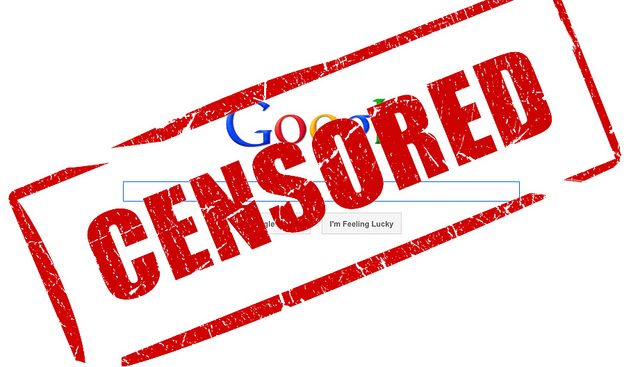Media experts urge journalists to pay attention to the social network Pinterest. While media outlets in many countries are still discovering the opportunities of visual communication through the social media, their U.S. counterparts have mastered a new platform and actively use it for the benefit of their own projects. “Pinterest ranks third place among the most popular social platforms, following Facebook and Twitter,” say the authors of the annual survey of digital technologies, “2012 Digital Marketer: Benchmark and Trend Report”. According to the data provided by comScore, the social network, which became available in May 2011, attracted 11.7 million unique visitors in the United States in the course of 8 months (as of January 2012).
Pinterest allows registered users to upload their favorite images (pins) onto their profiles and group them in thematic galleries (pinboards). By installing the “Pin It Button” application on their browser, users can immediately add any picture from the Internet to their profile. The network was created in a similar way to Facebook and Twitter, and the traditional functions of “Like”, “Follow” and “Share” (“Repin”), are also available here. Along with Instagram and Tumblr, Pinterest is a visual social platform, where images constitute the main content. However, it has recently become possible to add video and audio content that considerably extends the opportunities the network can offer. “Pinterest connects people and companies from around the world through common interests and tastes,” founders Ben Silbermann, Evan Sharp and Paul Sciarra claim. Media outlets and journalists who want to use Pinterest should know its key features in order to help them improve and promote their work.
Photos stored on Pinterest from other websites, redirect users to the primary source site. Thus online media can draw traffic to their websites using this technical feature. With the “Pin It!” button added to journalistic pieces, readers can save images onto their profiles, just as with the “Like” and “Tweet” functions. Brighter images are more likely to get repinned. The visual orientation of Pinterest is both its defining feature and its main complexity. Photos are no longer a supplementary, but major communication tool, with each image embodying a whole story. Thus, turning pinboards into storytelling platforms.
One of the first galleries of the Wall Street Journal (WSJ)’s profile was devoted to New York Fashion Week. Journalists added the best photos from the event in real time to Pinterest and Instagram. Both profiles contained references to the official website of the publication where users could view the full picture stories. “Visual reading of the journal,” is how Social Media Editor of WSJ, Emily Steel, described Pinterest. Having attracted 15,000 subscribers with only one pinboard, WSJ has continued their experiments with Pinterest and the publication now has 39 galleries on different topics (arts and entertainment, sports, cars and even pinboards describing how to put on lipstick properly and how to create origami for Mother’s Day). Other ways of using the visual nature of the network include: 1) the announcement of future pieces through pictures; 2) pinboards for cover-pages, cartoons, infographics; 3) separate galleries for top stories and large investigations; 4) as a reminder of older publications by posting images of them; 5) a portfolio for photojournalists.
Successful visual communication is achieved not only through high-quality content, but also due to a strong emotional connection with the audience. “To me, boards are a very human way of seeing the world,” Ben Silbermann, co-founder of the social network says. Pinterest users tend to follow interesting thematic galleries rather than companies’ pages. Therefore, it is important for media outlets to construct their own visual identity on Pinterest “to spice up” their profiles and share something personal with the audience. To make a connection with their subscribers, The Guardian has created a “Behind the Scenes” pinboard with pictures of the working life within the editor’s office. Non-governmental media organization Pro Publica opened a similar gallery called “Inside ProPublica” as well as a pinboard named, “What we are reading”, which contains photos of books read by reporters of the organization. CNN uses Pinterest to introduce their reporters, creating a gallery of the “CNN iReport Staff”. Some editors encourage journalists to have their own profiles on Pinterest. So-called ‘inspiration galleries’, where editors and journalists share images of things that inspire them, are also very popular.
Pinterest is focused primarily on highlighting visual topics. Pinboards dedicated to fashion, design, architecture, travel and weddings dominate the network. Therefore, media outlets producing entertainment content should pay particular attention to Pinterest. According to Mashable, an online publication that examines social media, the Today Show (which has nearly 78,000 subscribers) and the Travel Channel (nearly 33,000 subscribers) are among the most active users of Pinterest in the lifestyle sector. Their galleries cover a wide range of ‘soft’ topics from the most beautiful beaches in the world to the best sandwiches in the United States. Before creating pinboards, administrators of the Travel Channel profile asked their Facebook users which galleries they would most like to see on Pinterest. Many television networks are present on Pinterest, however like the Today Show, they prefer to showcase individual profiles for their programs rather than just one profile for the entire channel.
The interests of Pinterest users should be taken into consideration by journalists who want to attract new audiences. For example, the U.S. Weather Channel combines some of the most popular topics on Pinterest with forecast related content – thus creating galleries such as “Animals and the Weather”, “Seasonal Recipes” and “Weather and Sports”. Despite having a considerable amount of entertainment based content, Pinterest can also be used to distribute news and serious journalistic content. “People told me Pinterest was a site for cupcakes and wedding bouquets,” says Cristopher John Chivers, journalist for The New York Times, “I don’t think that kind of reputation needs to stand. Social media is a tool, like many others in our trade — it can be as good and as useful as we force it to be.” His profile on Pinterest is dedicated to the use of weapons.
Pinboards can be converted into an effective tool for crowdsourcing, where media outlets create galleries dedicated to an important topic that uses coverage and photos from eyewitnesses and citizen journalists. For example, Al Jazeera has a “Crowdsourced News” pinboard where users can upload whatever content they think deserves the journalists’ attention. Pinterest is kind of a photobank where journalists can find pictures, yet the copyright issue concerning the storage and use of images remains unresolved.
Article translated form the original Ukrainian “Як зробити журналістські матеріали “пінтереснішими”.
Tags: Instagram, Internet, Lifestyle Journalism, Photojournalism, Pinterest, Social Network, social networks, visual culture, Wall Street Journal, Web 2.0












































